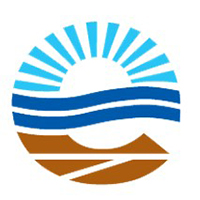Back
Claim Credit Verification Code: 2034
30 Minute Case Study
Erosion and Sediment Control
Lessons Learned from Solar Development in Georgia: Insight on Effective Erosion and Sedimentation Practices and Policies
Thursday, February 27, 2025
3:50 PM – 4:20 PM ET
Location: E21B
CE: .5 PDH
Level of Presentation: Intermediate

Erin M. Harris, CPESC, CESSWI, CPSS, PWS (she/her/hers)
Senior Scientist
Nutter & Associates, Inc
Athens, Georgia, United States
Presenter(s)
The State of Georgia as well as many other states across the nation have recently experienced an increase in construction and development associated with solar farms. While there are many positive benefits of solar energy, the conversion and clearing of land for solar farms can have a detrimental effect on our aquatic resources without thoughtful planning and implementation of erosion control practices. These projects often require expansive clearing, which creates challenges in mitigating E & S impacts unique to this industry. This presentation will present unique and challenging areas for erosion and sediment control and common issues observed among solar development projects in Georgia. We draw on recent solar project experience including serving as an expert witness on several high-profile E & S cases to highlight successes and failures. We will provide key insight based on real-world examples that demonstrate how proactive planning based on key design principles implemented by experienced, well-trained professionals serves as the cornerstone for a successful project. Attendees will learn about the value of properly planning, training, certification, and location specific expertise and key principles developed by the author based on extensive experience evaluating problematic sites. These same principles can be applied to solar developments throughout the U.S. to help ensure this important renewable energy source does not result in negative impacts to our aquatic resources.
Full Abstract: The State of Georgia has recently experienced an increase in construction and development associated with solar farms, which is expected to continue over the next five years. Large tracts of land previously used for agricultural production, silviculture operations, idle property, and forested areas are being cleared for construction of new solar farms within the state. While there are many positive benefits of solar energy, the conversion and clearing of land for solar farms can have a detrimental effect on our aquatic resources. However, with adequate project planning, design, and implementation by experienced personnel, solar farms can be successful in minimizing erosion and resultant sedimentation while remaining in compliance with all local, state, and federal requirements. Applying these principles to solar projects throughout the U.S. and beyond will help ensure continued development of this important renewable energy source does not result in negative impacts to our nation’s aquatic resources.
Like many areas throughout the U.S., the state of Georgia presents challenges for construction projects. The State of Georgia spans 59,425 square miles and comprises 28 different Level IV sub-ecoregions, each with its own unique factors that affect erosion such as climate, topography, soil types, and vegetation. Solar farm projects have been developed on properties with steep, dissected topography, highly erodible soils, and frequent intense precipitation by firms from other parts of the country that have no prior knowledge or experience working in these unique areas. Oftentimes solar farm projects in these more sensitive landscapes have resulted in costly design, installation, and maintenance issues that could have been avoided.
To ensure a solar project remains in compliance, the construction site’s erosion and sediment (E & S) control program must be a top priority. Here, we draw on recent solar project experience including serving as an expert witness on several high-profile E & S cases to highlight successes and failures. We will provide key insight from real-world examples that demonstrate how proactive planning based on key design principles implemented by experienced, well-trained professionals serves as the cornerstone for a successful project. These principles and practices were developed and applied by the author, are based on extensive experience evaluating problematic sites, and can be applied to any construction site.
A successful erosion and sedimentation control program at a solar farm that protects receiving waters, downstream properties, and is properly designed, installed, and maintained throughout all phases of construction can be accomplished throughout the U.S. by implementing this approach. It is up to us as a profession to educate others that work in our field about the value of properly planning, training, certification, and location specific expertise.
Full Abstract: The State of Georgia has recently experienced an increase in construction and development associated with solar farms, which is expected to continue over the next five years. Large tracts of land previously used for agricultural production, silviculture operations, idle property, and forested areas are being cleared for construction of new solar farms within the state. While there are many positive benefits of solar energy, the conversion and clearing of land for solar farms can have a detrimental effect on our aquatic resources. However, with adequate project planning, design, and implementation by experienced personnel, solar farms can be successful in minimizing erosion and resultant sedimentation while remaining in compliance with all local, state, and federal requirements. Applying these principles to solar projects throughout the U.S. and beyond will help ensure continued development of this important renewable energy source does not result in negative impacts to our nation’s aquatic resources.
Like many areas throughout the U.S., the state of Georgia presents challenges for construction projects. The State of Georgia spans 59,425 square miles and comprises 28 different Level IV sub-ecoregions, each with its own unique factors that affect erosion such as climate, topography, soil types, and vegetation. Solar farm projects have been developed on properties with steep, dissected topography, highly erodible soils, and frequent intense precipitation by firms from other parts of the country that have no prior knowledge or experience working in these unique areas. Oftentimes solar farm projects in these more sensitive landscapes have resulted in costly design, installation, and maintenance issues that could have been avoided.
To ensure a solar project remains in compliance, the construction site’s erosion and sediment (E & S) control program must be a top priority. Here, we draw on recent solar project experience including serving as an expert witness on several high-profile E & S cases to highlight successes and failures. We will provide key insight from real-world examples that demonstrate how proactive planning based on key design principles implemented by experienced, well-trained professionals serves as the cornerstone for a successful project. These principles and practices were developed and applied by the author, are based on extensive experience evaluating problematic sites, and can be applied to any construction site.
A successful erosion and sedimentation control program at a solar farm that protects receiving waters, downstream properties, and is properly designed, installed, and maintained throughout all phases of construction can be accomplished throughout the U.S. by implementing this approach. It is up to us as a profession to educate others that work in our field about the value of properly planning, training, certification, and location specific expertise.
Learning Objectives:
At the conclusion of this presentation, attendees will:
- Understand why proper project planning is the most critical process to ensure a solar construction project remains in compliance with local, state, and federal regulations and that downstream impacts are prevented or minimized.
- Utilize the provided success and failures based on real-world examples to avoid costly design, installation, and maintenance issues on solar farm projects or other construction projects developed in more sensitive landscapes with a high erosion potential.
- Apply the basic principles and practices learned in the class to other solar developments to make a site's erosion and sediment control program a top priority.

.jpg)


